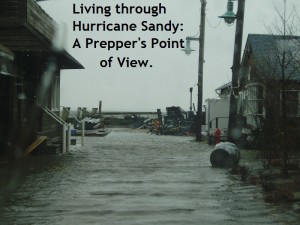 Sandy is a name that will be with me the rest of my life. The damage that she has done to my home area is truly amazing, and it will be years before all of it is undone. I’m going to share my initial impressions of what worked for me and my family to stay safe and warm during this first week.
Sandy is a name that will be with me the rest of my life. The damage that she has done to my home area is truly amazing, and it will be years before all of it is undone. I’m going to share my initial impressions of what worked for me and my family to stay safe and warm during this first week.
The Generator– Living with a gasoline powered generator isn’t the easiest thing. It is noisy and smelling faintly like gas all the time isn’t optimal, but it beats the Hell out of not having one. I got my cousin (a licensed electrician) to hard wire my generator to a 30 amp breaker in my panel. This let me turn off my main service and treat the new 30A breaker as a main. This was a godsend as I didn’t have to run electrical cords all over the place, and we could function pretty normally. Running the dryer was a no-no, but everything else worked pretty well. I did run into trouble trying to keep the fridge cold on the overnight, but as we ate our way through it that problem went away, except for my son’s milk which we surrounded with ice frozen in 1 gallon containers every night. Gasoline was a bit worrisome, and I made sure to keep my load low and watch my run times. It might not have been fun to turn off the power mid-day, but not having it at all due to running dry would have been worse. Jack Spirko from The Survival Podcast and Steve Harris from solar1234.com did some great shows together right before the storm and their advice was priceless during the aftermath.
The Woodstove– Sandy was a late in the season Hurricane for us here in the Northeast, and the cold weather followed a few days after she hit. For the many (millions) with out power the cold was pretty bad. I was glad to have my woodstove. I’ve burned wood for 5 years now mainly with the goal of saving a few bucks with some sweat equity, but having it to keep us warm in a disaster has elevated it to family member! My wife and I moved a face cord into the lee of the house and covered it tightly with a tarp to protect it from the driving rain. We lucked out in the fact that the heaviest rains bypassed Long Island, for the most part, and my firewood stayed nice and dry. It was a bit more work keeping the stove fed when the oil heat wasn’t there as an easy back up, but well worth it. Before my neighbor left for his in-laws he was getting a high of 56 in the house during the day.
Security- Long Island has seen a smattering of looting, but as long as you didn’t get sucked into the stupid of the Gas Lines, you were pretty safe in your house. I’ve been keeping the house on lockdown just in case. I’ve got power and heat, and while willing to share (extension cords to the neighbors, fire wood to the couple across the street, hot meals to friends and family), I don’t want to appear like an easy mark for anyone looking to take advantage of me or my family. I kept my gates locked and if we went out during the day I chained up the generator, which also got put int the garage every night. When the gas shortage started I also moved our cars into the back behind the fence to deter any siphoning attempts.
Food and Water– This wasn’t an issue for me as I am 5 miles from the hardest hit areas. We have a good store of canned, dry, and frozen food and had plenty to eat at all times. Our only issue was with the food getting warm with the generator turned off overnight. We started only cooking enough for dinner instead of our usual dinner plus lunch type of cooking.
That was my initial experiences from a Prepper point of view. I’ll expand on this stuff over the next few days as well as adding how I think this will affect my Prepping going forward. My one big take away is Prepping isn’t about blood and guts like you see on TV, it is about keeping your family comfortable and safe during trying times.
Affiliate Disclosure: I am grateful to be of service and bring you content free of charge. In order to do this, please note that when you click links and purchase items, in most (not all) cases I will receive a referral commission. Your support in purchasing through these links enables me to keep the content train rolling

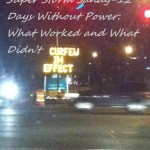
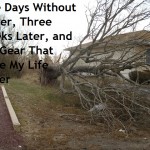

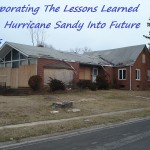
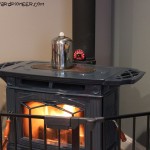
Thank you for sharing your experience. It will help us all to be better preppers from hearing about your trial run. We are planning on doing a week long trial run using no electricity, carrying our water or using what we have stored, etc. to see how we are doing. I still have to get a few things in place first. We had our trial run in 2008 when we had no electricity, water, etc for 20 days except for 10-30 minute times occasionally. We did great and were able to help some neighbors but there were things that could have been easier. So glad to hear you are doing okay.
Peggy, thanks for reading. Were you in the New England Ice Storm in 2008? I worked the The Ice Storm of ’98 up near Watertown,NY the devastation was unreal! I’m glad to hear you made through okay and were able to help others. I think the helping part is a critical part of Prepping.
I just love reading all your blog posts and others. As I am new to the Prepper point of view. I am working my best in a hurry! We started almost a year and half ago making the switch to using freeze-dried foods or fresh what we grow…it’s been “different” but well worth it. I hope to be freezer free soon… I am canning what I grow or can’t get through my biz. If you would like more info on freeze dried foods and why they are healthier then canned food from the store please ask I love to talk about health! I’m a nut, I know 🙂 Praying for you in the recovery.
http://www.HowKrystalThrives.ShelfReliance.com Contact me for 5-60% off!
Thanks for checking out my blog and I appreciate your comment! I’m really impressed with what I’ve read about Thrive and look forward to your input on it.
Mike I know that I’m bias, but I’ve tried some of the other stuff on the market and they are made for storing, not for health conscious people, but the problem with those is people don’t know what it tastes like or how to cook it when the “time” comes. Check the sodium levels in some and you might just have a heart attack reading the label Lol! Thrive is made to be used everyday so that you know how to use it and what to expect when something happens. They are Non-GMO, no preservatives, no salts, no sugars. Just what the label says if strawberries then strawberries, green beans then green beans (which btw I didn’t even plant any this year because these are so good and much less work! 🙂
Thanks for the info Krystal. I’ve tried some of the other stuff and it was edible but not exactly what I’d want to live on long term.
Glad you and the family are safe bud! Keep it that way.
Thanks, Wolfgang! We are all safe and sound but it has been a bit weird around here.
Sounds alot like what we went trough after Katrina except for us it was the heat.
Ironically it was a Line Crew from Louisiana that got my lights turned on yesterday!
You write in a catchy, entertaining way, and ooze common sense, which I greatly appreciate. Thanks! 🙂
One thing I came to think of, reading your post, is that if you can afford the installation of a masonry heater of any configuration in stead of American “conventional” woodstoves, you could cut down your firewood consumption to just a couple of cords a year, and would get away with only keeping a fire going a couple of times a day in the cold winter, as the thermal mass of the structure radiates heat throughout the next 12 to 24 hours. Masonry heaters can also be hooked up to your water heater, for that additional creature comfort.
I grew up in Scandinavia, where about 95% of all old houses have these types of fireplaces in them. Century old houses and older, even in big cities, have one of these woodburning stoves per room. Masonry heaters can be built with a cooktop and a baking oven, and they can be faced with anything from ceramic tiles to plain brick, stone, plaster, to painted metal sheets depending on style, so they can be built to fit into any house’s style. You can find comprehensive information about the fireplaces at the Masonry Heater Association’s website.
http://www.mha-net.org/
For more visual styles, you might want to google “kakelugn” for image results of Swedish masonry heaters.
Thanks for the info Penny. Masonry Heaters just don’t seem to be all that common here in the US, I think the closest we come is the soapstone stoves. My stove is one of the newer models that is highly efficient and meets current EPA standards, I get by on about 3 cords of wood running the stove from October till April. I’m always interested in more efficiency and knowledge though!
Most masonry heaters are currently exempt from EPA standards, since they’re second to pellet stoves and that’s about it in efficiency. These heaters look different, the soapstone ones tend to be Finnish made “Tulikivi” brand ones. The important thing is, if you have the contraflow flue system, it’ll heat up pretty nicely.
I’m just happy to hear that people are coping in the storm zone, since only the bad news filter to us out here in the Pacific Northwest.
This was a very good post. I have often wondered how it was for people especially those who were prepared. I am glad you posted this.